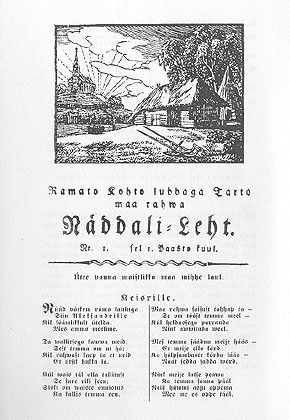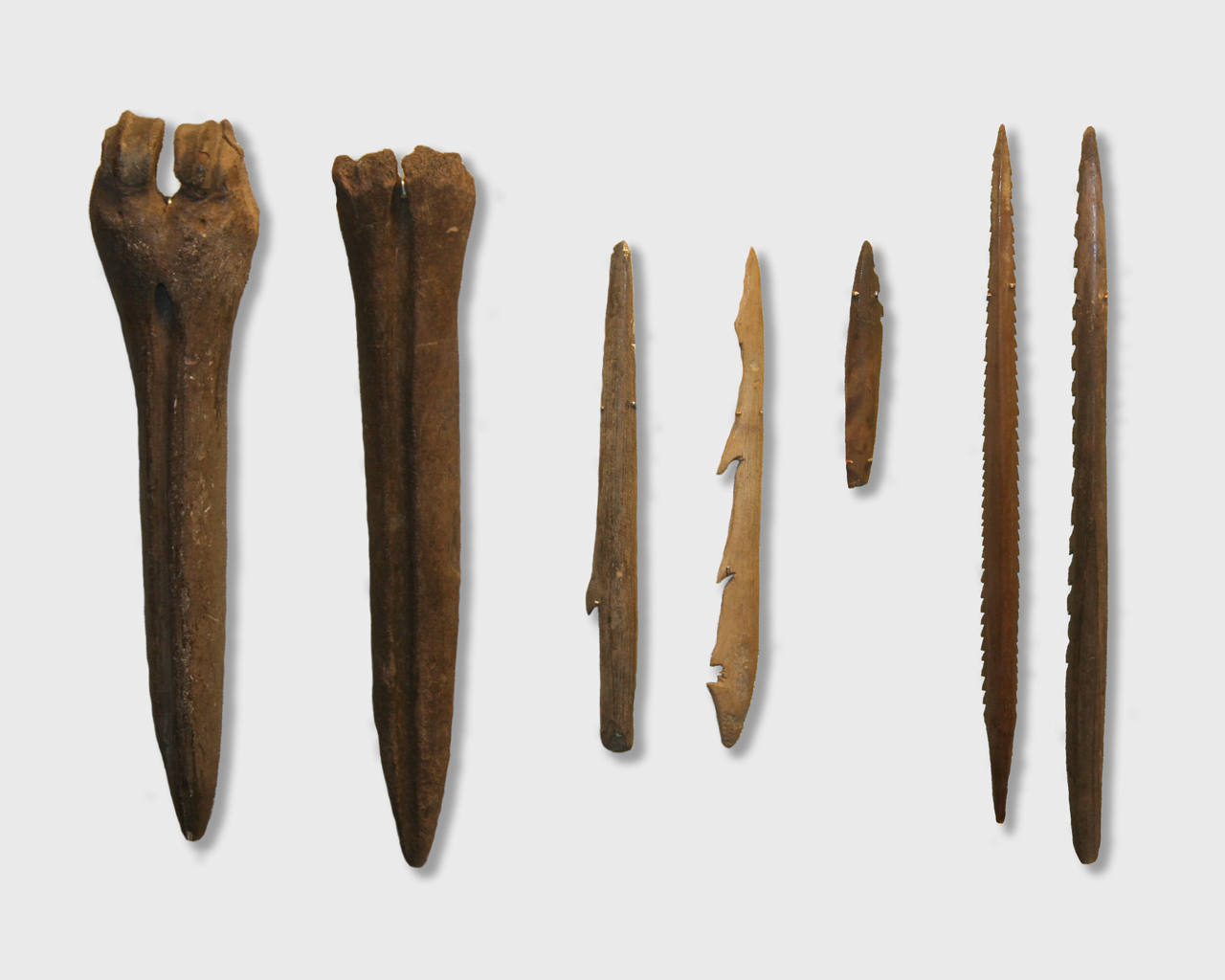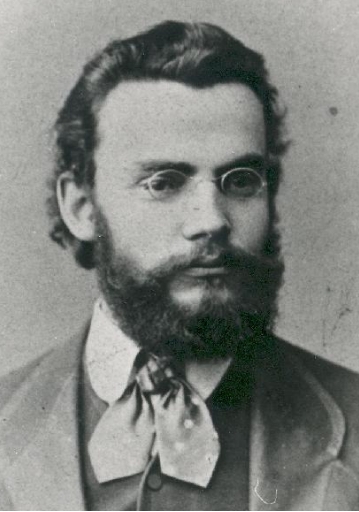|
Estophile
Estophilia (from Greek: φίλος, ''filos'' - "dear, loving") refers to the ideas and activities of people not of Estonian descent who are sympathetic to or interested in Estonian language, Estonian literature or Estonian culture, the history of Estonia and Estonia in general. Such people are known as Estophiles. The opposite of Estophilia is Estophobia. The term particularly refers to the activities of the Estophile Movement of the late 18th to early 19th century, when Baltic German scholars began documenting and promoting Estonian culture and language. This movement played a crucial role triggering the Estonian Age of Awakening almost 100 years later, which eventually led to the Estonian Declaration of Independence in 1918, the Estonian War of Independence (1918–1920) and the foundation of the Republic of Estonia. Background Since the Northern Crusades, Estonian culture had been rather suppressed in society, and the ruling culture – the one that governed cities, par ... [...More Info...] [...Related Items...] OR: [Wikipedia] [Google] [Baidu] |
History Of Estonia
The history of Estonia forms a part of the history of Europe. Humans settled in the region of Estonia near the end of the last glacial era, beginning from around 8500 BC. Ancient Estonia: pre-history Mesolithic Period The region has been populated since the end of the Late Pleistocene glaciation, about 10,000 BC. The earliest traces of human settlement in Estonia are connected with the Kunda culture. The early mesolithic Pulli settlement is located by the Pärnu River. It has been dated to the beginning of the 9th millennium BC. The Kunda culture received its name from the ''Lammasmäe'' settlement site in northern Estonia, which dates from earlier than 8500 BC. Bone and stone artifacts similar to those found at Kunda have been discovered elsewhere in Estonia, as well as in Latvia, northern Lithuania and southern Finland. Among minerals, flint and quartz were used the most for making cutting tools. Neolithic Period The beginning of the Neolithic Period is marked by the ... [...More Info...] [...Related Items...] OR: [Wikipedia] [Google] [Baidu] |
Estonian Language
Estonian ( ) is a Finnic language, written in the Latin script. It is the official language of Estonia and one of the official languages of the European Union, spoken natively by about 1.1 million people; 922,000 people in Estonia and 160,000 outside Estonia. Classification Estonian belongs to the Finnic branch of the Uralic language family. The Finnic languages also include Finnish and a few minority languages spoken around the Baltic Sea and in northwestern Russia. Estonian is subclassified as a Southern Finnic language and it is the second-most-spoken language among all the Finnic languages. Alongside Finnish, Hungarian and Maltese, Estonian is one of the four official languages of the European Union that are not of an Indo-European origin. From the typological point of view, Estonian is a predominantly agglutinative language. The loss of word-final sounds is extensive, and this has made its inflectional morphology markedly more fusional, especially with respect to no ... [...More Info...] [...Related Items...] OR: [Wikipedia] [Google] [Baidu] |
Estonian Literature
Estonian literature ( et, eesti kirjandus) is literature written in the Estonian language (c. 1,100,000 speakers) The domination of Estonia after the Northern Crusades, from the 13th century to 1918 by Germany, Sweden, and Russia resulted in few early written literary works in the Estonian language. The oldest records of written Estonian date from the 13th century. ''Originates Livoniae'' in Chronicle of Henry of Livonia contains Estonian place names, words and fragments of sentences. The ''Liber Census Daniae'' (1241) contains Estonian place and family names.The Development of Written Estonian by George Kurman The earliest extant samples of connected Estonian are the so-called Kullamaa prayers dating from 1524 and 1528. The first known printed book is a bilingual German-Estonian translation of ... [...More Info...] [...Related Items...] OR: [Wikipedia] [Google] [Baidu] |
Estonian Age Of Awakening
The Estonian Age of Awakening ( et, Ärkamisaeg) is a period in history where Estonians came to acknowledge themselves as a nation deserving the right to govern themselves. This period is considered to begin in the 1850s with greater rights being granted to commoners and to end with the declaration of the Republic of Estonia in 1918. The term is sometimes also applied to the period around 1987 and 1988. History Although Estonian national consciousness spread in the course of the 19th century, some degree of ethnic awareness in the literate middle class preceded this development.Raun, Toivo U. (2003)"Nineteenth- and early twentieth-century Estonian nationalism revisited". '' Nations and Nationalism'' 9.1, 129–147. By the 18th century the self-denomination ''eestlane'' (Estonian) along with the older ''maarahvas'' (country folk) spread among Estonians in the then provinces of Estonia and Livonia of the Russian Empire. The Bible was translated in 1739, and the number of boo ... [...More Info...] [...Related Items...] OR: [Wikipedia] [Google] [Baidu] |
Estonian Culture
The culture of Estonia combines an indigenous heritage, represented by the country's Finnic national language Estonian, with Nordic and German cultural aspects. The culture of Estonia is considered to be significantly influenced by that of the Germanic-speaking world. Due to its history and geography, Estonia's culture has also been influenced by the traditions of other Finnic peoples in the adjacent areas, also the Baltic Germans, Balts, and Slavs, as well as by cultural developments in the former dominant powers, Sweden, Denmark and Russia. Traditionally, Estonia has been seen as an area of rivalry between western and eastern Europe on many levels. An example of this geopolitical legacy is an exceptional combination of multiple nationally recognized Christian traditions: Western Christianity (the Catholic Church and the Estonian Evangelical Lutheran Church) and Eastern Christianity (the Orthodox Church (the Estonian Apostolic Orthodox Church)). The symbolism of the border or m ... [...More Info...] [...Related Items...] OR: [Wikipedia] [Google] [Baidu] |
Estonia
Estonia, formally the Republic of Estonia, is a country by the Baltic Sea in Northern Europe. It is bordered to the north by the Gulf of Finland across from Finland, to the west by the sea across from Sweden, to the south by Latvia, and to the east by Lake Peipus and Russia. The territory of Estonia consists of the mainland, the larger islands of Saaremaa and Hiiumaa, and over 2,200 other islands and islets on the eastern coast of the Baltic Sea, covering a total area of . The capital city Tallinn and Tartu are the two largest urban areas of the country. The Estonian language is the autochthonous and the official language of Estonia; it is the first language of the majority of its population, as well as the world's second most spoken Finnic language. The land of what is now modern Estonia has been inhabited by '' Homo sapiens'' since at least 9,000 BC. The medieval indigenous population of Estonia was one of the last " pagan" civilisations in Europe to adopt Ch ... [...More Info...] [...Related Items...] OR: [Wikipedia] [Google] [Baidu] |
Alexander I Of Russia
Alexander I (; – ) was Emperor of Russia from 1801, the first King of Congress Poland from 1815, and the Grand Duke of Finland from 1809 to his death. He was the eldest son of Emperor Paul I and Sophie Dorothea of Württemberg. The son of Grand Duke Paul Petrovich, later Paul I, Alexander succeeded to the throne after his father was murdered. He ruled Russia during the chaotic period of the Napoleonic Wars. As prince and during the early years of his reign, Alexander often used liberal rhetoric, but continued Russia's absolutist policies in practice. In the first years of his reign, he initiated some minor social reforms and (in 1803–04) major liberal educational reforms, such as building more universities. Alexander appointed Mikhail Speransky, the son of a village priest, as one of his closest advisors. The Collegia were abolished and replaced by the State Council, which was created to improve legislation. Plans were also made to set up a parliament and sign a constitu ... [...More Info...] [...Related Items...] OR: [Wikipedia] [Google] [Baidu] |
Lühhike öppetus
''Lühhike öppetus'' (Estonian language, Estonian for ''Brief Instruction''), by modern orthography 'Lühike õpetus', was the first periodical publication in the Estonian language. Edited by Dr. Peter Ernst Wilde and printed for a short while in 1766–1767, it described various simple medical techniques intended to be usable in the field by peasants. The full title of the newspaper was ''Lühhike öppetus mis sees moned head rohhud täeda antakse, ni hästi innimeste kui ka veiste haigusse ning viggaduste vasto'', and it can be translated as ''Brief instruction announcing some good medicine, both for human and bovine ailments and traumas''. It was printed weekly, with each issue having four pages. A total of 41 issues were printed. August Wilhelm Hupel was responsible for translating the content to Estonian language. Classification ''Lühhike öppetus'' did not deal with news; thus, it is not universally classified as a newspaper — despite its format. Various source ... [...More Info...] [...Related Items...] OR: [Wikipedia] [Google] [Baidu] |
French Revolution
The French Revolution ( ) was a period of radical political and societal change in France that began with the Estates General of 1789 and ended with the formation of the French Consulate in November 1799. Many of its ideas are considered fundamental principles of liberal democracy, while phrases like ''liberté, égalité, fraternité'' reappeared in other revolts, such as the 1917 Russian Revolution, and inspired campaigns for the abolition of slavery and universal suffrage. The values and institutions it created dominate French politics to this day. Its causes are generally agreed to be a combination of social, political and economic factors, which the ''Ancien Régime'' proved unable to manage. In May 1789, widespread social distress led to the convocation of the Estates General, which was converted into a National Assembly in June. Continuing unrest culminated in the Storming of the Bastille on 14 July, which led to a series of radical measures by the Assembly, i ... [...More Info...] [...Related Items...] OR: [Wikipedia] [Google] [Baidu] |
Governorate Of Livonia
The Governorate of Livonia, also known as the Livonia Governorate, was a Baltic governorate of the Russian Empire, now divided between Latvia and Estonia. Geography The shape of the province is a fairly rectangular in shape, with a maximum length of 246 versts (262 km) and a width of 198 versts (211 km). The borders are: the Governorate of Estonia to the north, Lake Peipsi and the strait connecting it with Lake Pskov to the east, the Governorate of Pskov and Vitebsk to the south, the Governorate of Courland to the west, and the Gulf of Riga to the west. The length of the western border (the seacoast) is 280 versts (299 km). The area of the Livonian province (according to Strelbitsky) is 41,325.4 square versts (47,030.87 km2). Law The highest court is the Livländisches Hofgericht (Court of Appeal), the Landgericht (Courts of Appeal), the Ordnungsgericht (Courts of First Instance) for the gentry. Ordungsgericht), the county court (Kreisgericht) for the ... [...More Info...] [...Related Items...] OR: [Wikipedia] [Google] [Baidu] |
Governorate Of Estonia
The Governorate of Estonia, also known as the Governorate of Esthonia (Pre-reformed rus, Эстля́ндская губе́рнія, r=Estlyandskaya guberniya); et, Eestimaa kubermang was a governorate in the Baltic region, along with the Livonian and Courland Governorates. It is a part of the Imperial Russian administration ('' guberniya''), which is located in modern-day northern Estonia and some islands in the West Estonian archipelago, including the islands of Hiiumaa () and Vormsi (). The Governorate was established in 1796 when Paul I's reform abolished the Viceroyalty (''namestnik''). Previously, the Reval Governorate existed under Peter I's reign from the Treaty of Nystad, which ceded territory from Sweden to the newly established Russian Empire, until its inexistence in 1783. From the 1850s until 1914, the Estonian national awakening was influenced and characterized the governorate by general modernization, the reorganization into a modern European society, ... [...More Info...] [...Related Items...] OR: [Wikipedia] [Google] [Baidu] |








